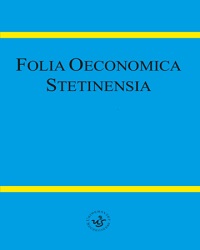An Assessment of the Reliability of Discriminatory Models on the Basis of the Bankruptcy of Comapanies in the Food Industry in Poland
An Assessment of the Reliability of Discriminatory Models on the Basis of the Bankruptcy of Companies in the Food Industry in Poland
Author(s): Karolina Kozioł, Rafał PiteraSubject(s): National Economy, Business Economy / Management, Micro-Economics, Policy, planning, forecast and speculation, Accounting - Business Administration
Published by: Wydawnictwo Naukowe Uniwersytetu Szczecińskiego
Keywords: discriminatory analysis; assessment of reliability; company; bankruptcy forecast; risk;
Summary/Abstract: Research background: The widespread occurrence of the phenomenon of bankruptcy leads to an analysis of the scale and causes of this phenomenon in Polish conditions. It should be remembered that the features that inextricably accompany the conduct of any business are uncertainty and risk, hence the phenomenon of the bankruptcy of enterprises is not foreign and it is impossible to eliminate. Purpose: Assessment of the credibility of Polish discriminatory models as a method of the early warning of bankruptcy of enterprises on a sample of enterprises from the Polish food industry. Research methodology: Literature review and verification of 10 methods using a linear function of discrimination most frequently adopted by people dealing with bankruptcy issues and examination of the financial condition of companies. The food industry was subject to analysis and financial assessment regarding the forecast of the bankruptcy of companies in the process of empirical verification. Results: The interpretation of the results was based on the financial statements of the survey sample consisting of 50 Polish companies (25 with a good financial condition and 25 that were bankrupt) which in the years 2005–2016 declared bankruptcy). Novelty: The results are based on a sample of food industry companies point to the legitimacy of the research. The use of a linear discriminant function confirms the usefulness of early warning models (prognostic reliability around 70%). The study presents a classification of models according to prognostic reliability. Guided by the criterion of model credibility, one can use tools with high prognostic efficiency in assessing the financial situation.
Journal: Folia Oeconomica Stetinensia
- Issue Year: 20/2020
- Issue No: 1
- Page Range: 221-231
- Page Count: 11
- Language: English

